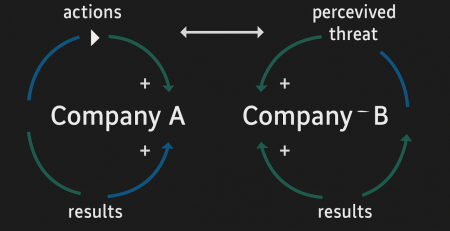The Learjet Lesson: Trust Is Built on Expectations, Not Promises
In 1964, Bill Lear delivered his first jet to a client. It was an instant success. Shortly after, two of his planes crashed under mysterious circumstances. Lear could have looked the other way, blamed the pilots, or let the issue slide to protect sales momentum.
Instead, he took a terrifying risk. He personally recreated the problem in the air to find the cause and nearly lost his life doing it.
When he confirmed the defect, he grounded every plane, built a new part, and retrofitted all 55 jets. The choice cost him millions and damaged customer confidence. It took two years to rebuild the business. But Lear chose integrity over easy wins. He was willing to risk money, momentum, and reputation, but not his character.
The lesson is simple. Short-term compromises destroy long-term trust. Lear chose to clarify, manage, and fulfill expectations, even at a painful cost. That same principle applies to value-based partnerships in business today.
The Problem: Misfit Clients and Fuzzy Expectations
In the rush to grow, every deal feels urgent. But when you work with clients who do not align with your strengths, or when you fail to define expectations upfront, you create churn and distrust.
Misfit clients drain more time and energy than they return. Vague expectations lead to scope creep, miscommunication, and eroded trust. Short-term wins blind us to long-term damage.
The result is predictable: costly churn, burned-out teams, and wasted capacity.
The Solution: A System for Value-Based Partnerships
This system is easy to understand but hard to consistently apply.
Clarify Fit Upfront
Do not guess, score.
Build a Client Fit Scorecard with essential factors such as industry fit, budget alignment, cultural values, communication style, leadership quality, and stage of growth. Decide what passing looks like and stick to it.
Manage Expectations Transparently
Before you send a proposal, define the client’s value equation. What outcomes matter most to them? What risks do they fear? What metrics will they track? Where are the gaps between what is said and what is assumed? Write this down in plain language. Review it together before signing anything.
At my company we have written these things down, but too often we have treated them like fine print. They are not. They need enough time and focus to stand out from the rest of the contract.
Fulfill with Accountability
Build a Promise Tracker. List the three to five commitments both sides agreed to and review it every ninety days. Keep it simple. A shared document or dashboard works. Use it as a compass, not just a checklist.
Why It Works
It filters out misfit clients before they drain your energy. It prevents scope creep by replacing assumptions with clear agreements. It strengthens trust through transparency and regular accountability, and it frees you to serve your best clients better.
Bill Lear slowed down, took the hard road, and fixed problems at the root. That is what value-based partnerships require. The price of short-term comfort is never worth the loss of trust.
This Week
Build your Client Fit Scorecard. Take thirty minutes to write down the criteria that define your best clients. Score each one from one to five. Run every new opportunity through it.
Clarity upfront saves years of frustration later. Lear rebuilt trust by choosing integrity over speed. You can do the same by choosing fit over volume.





Leave a Reply